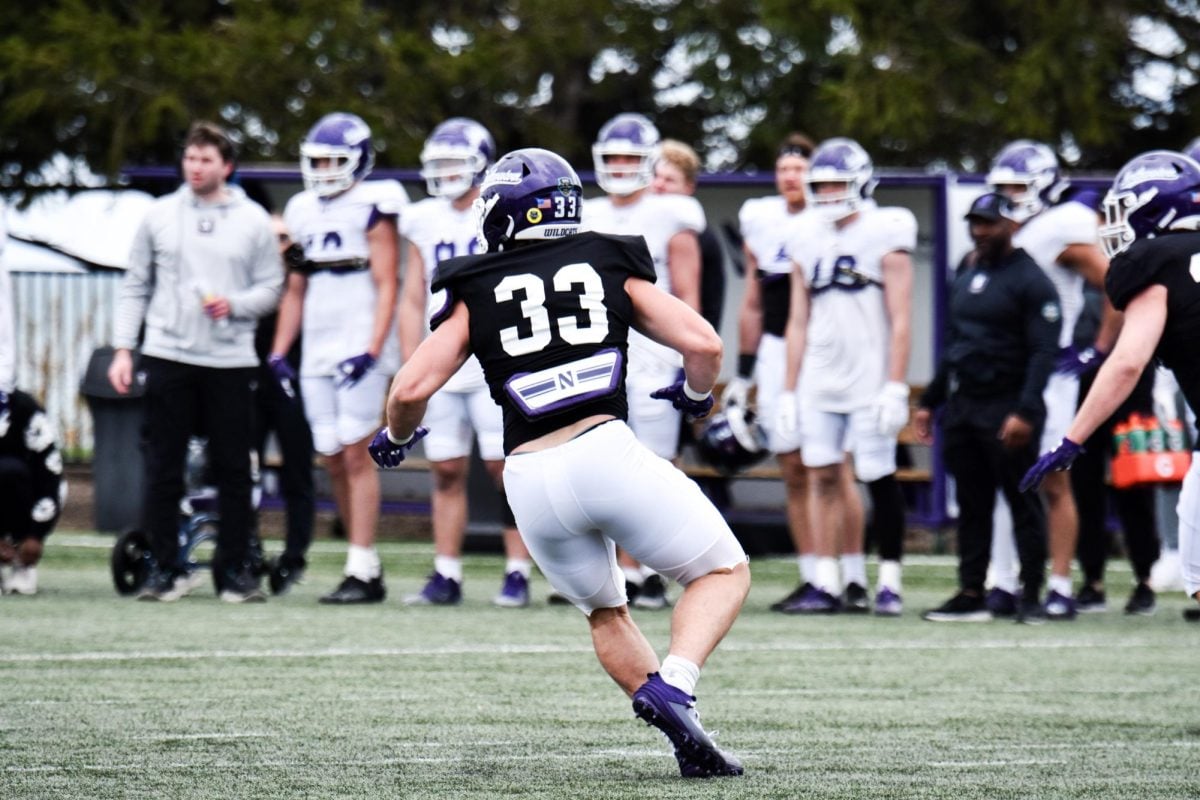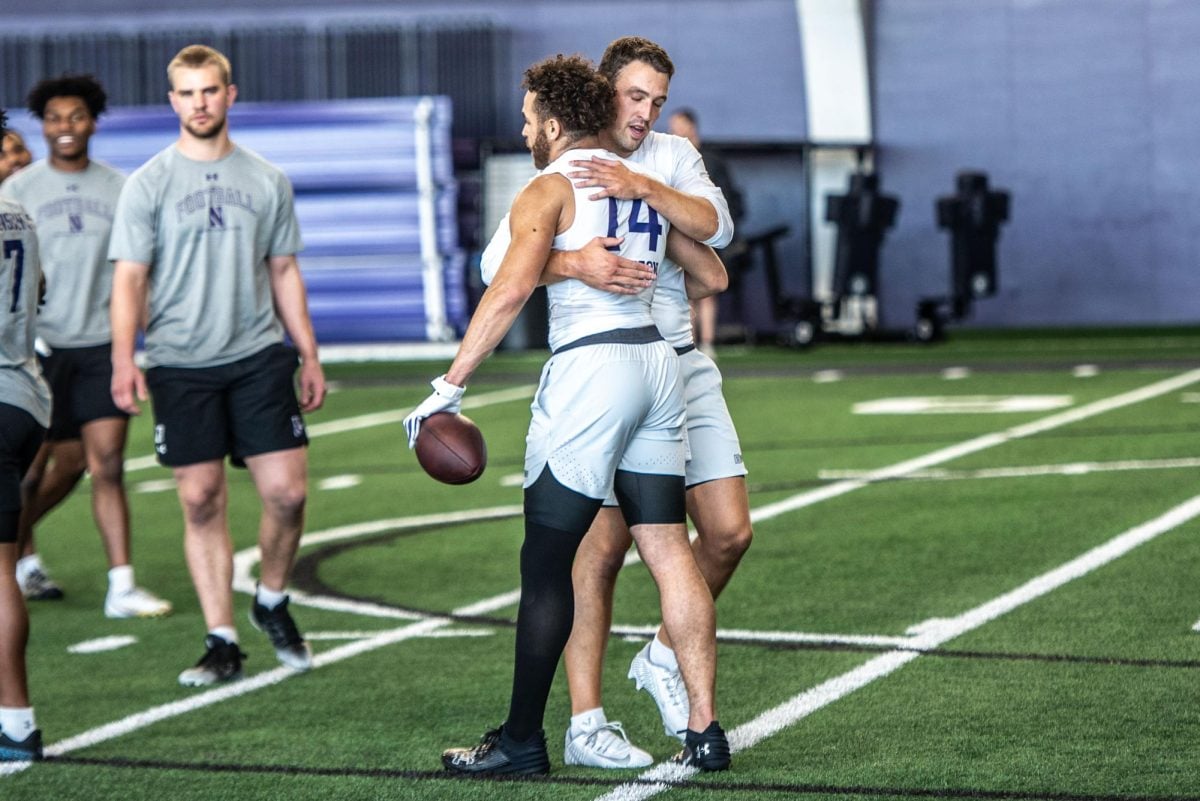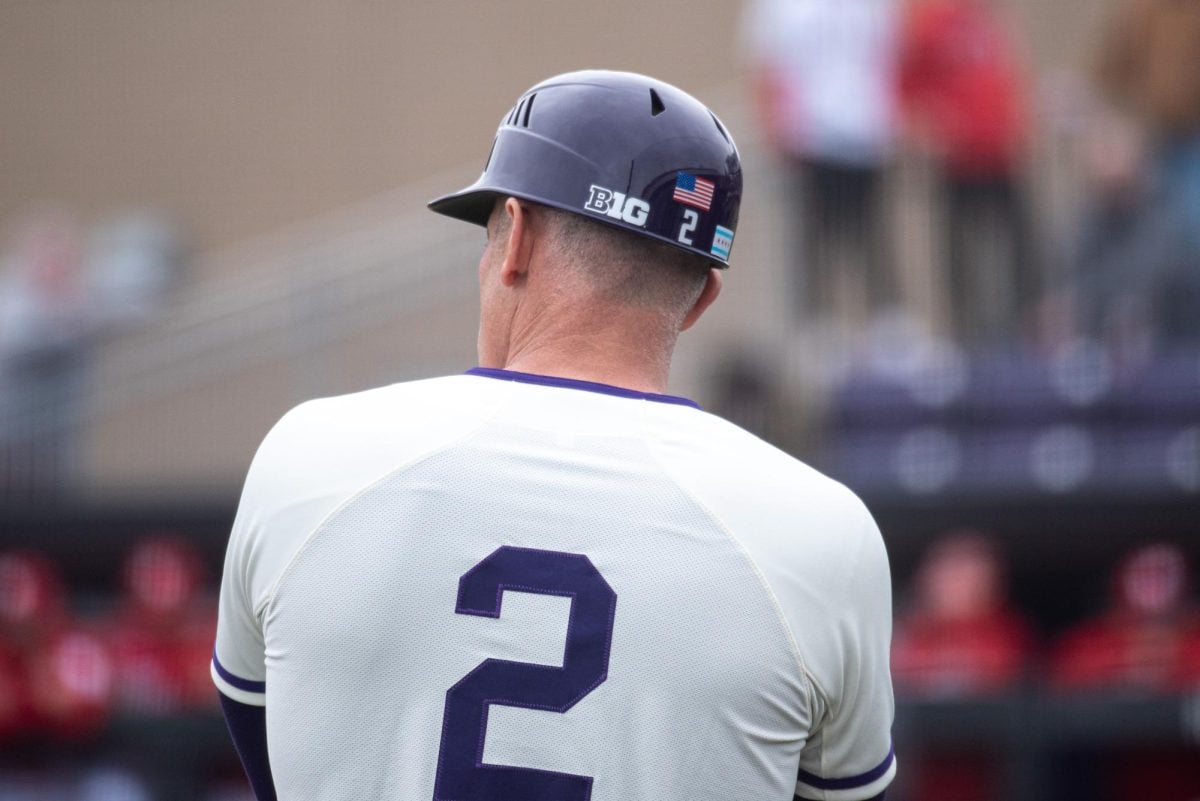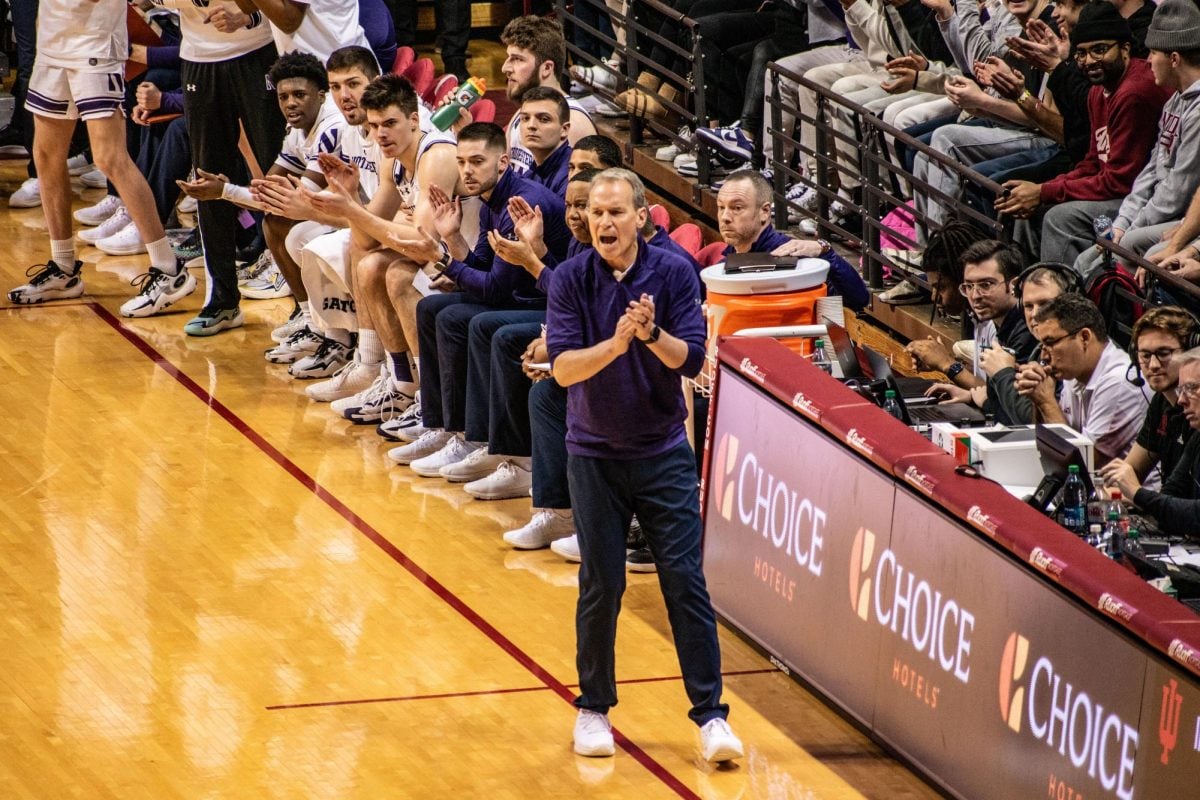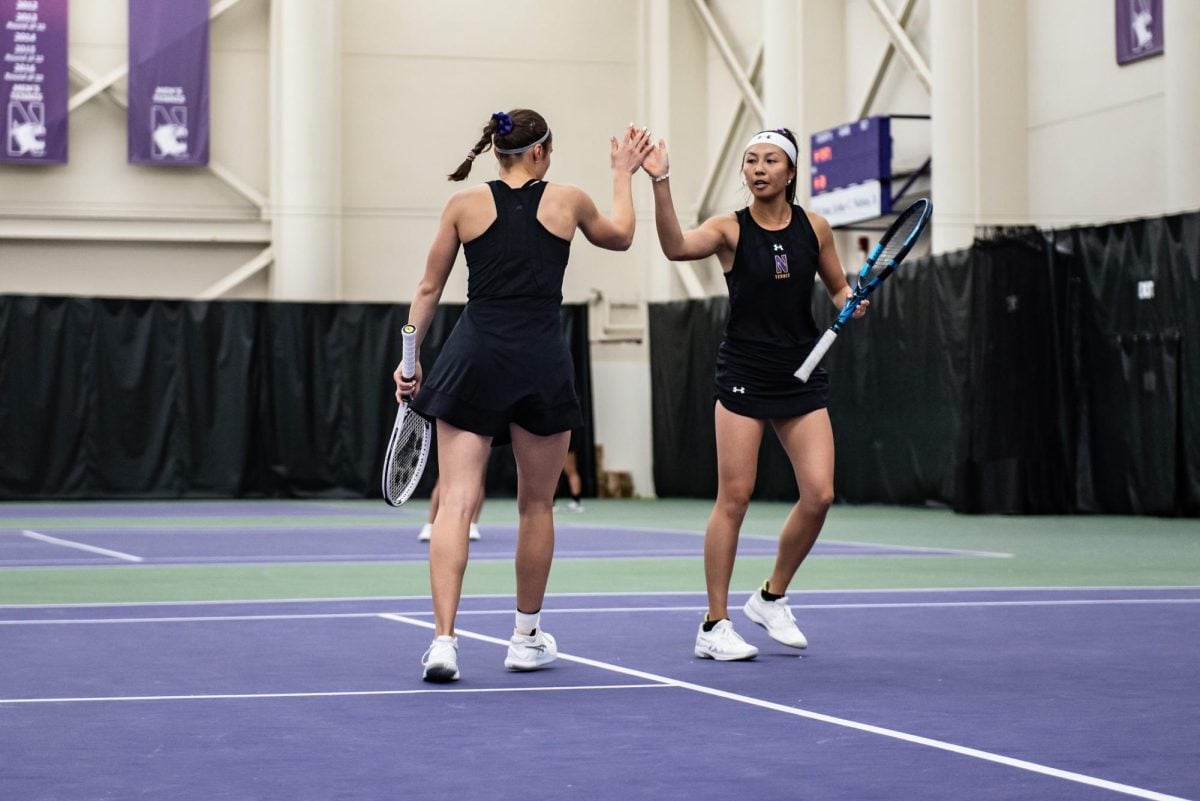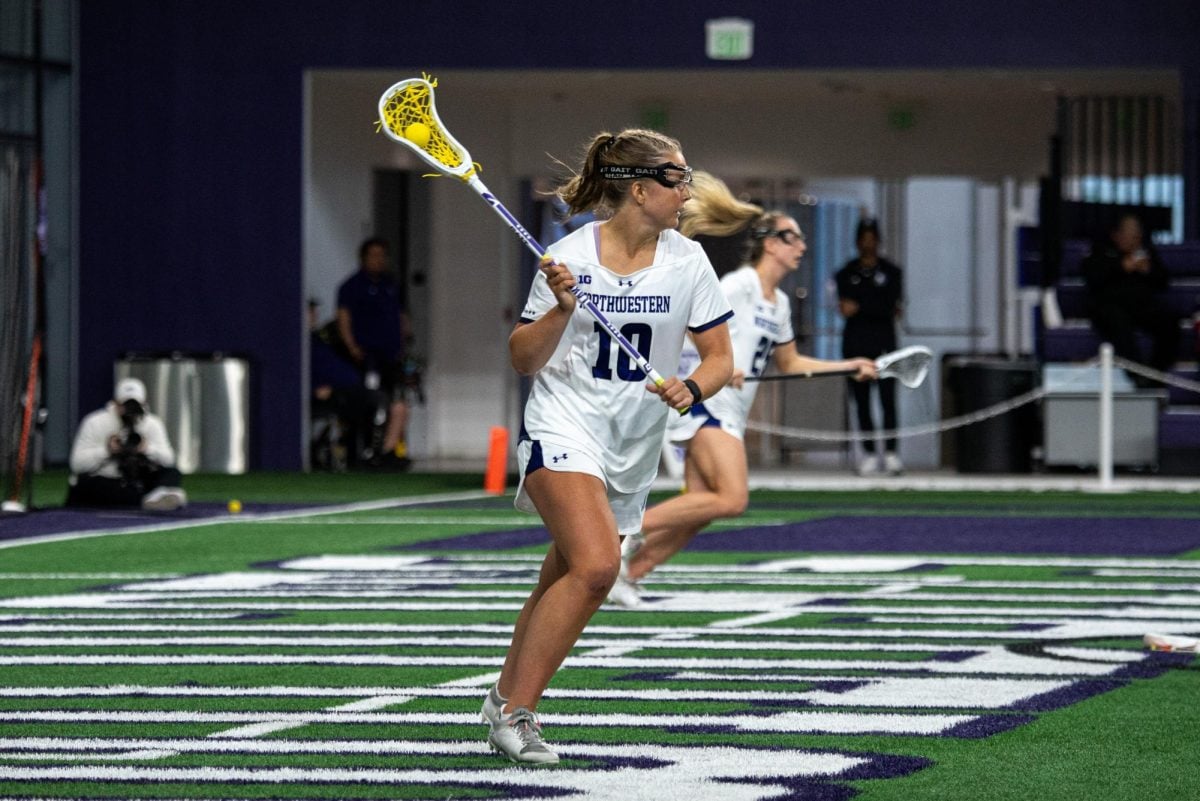Just 19 years separate Len Williams and Kain Colter.
Between them are eight players, from Tim Hughes in 1994 to Dan Persa in 2011. Eight quarterbacks, none of them black.
“I’d be lying if I said it didn’t,” Colter said when asked if it meant anything to him to be Northwestern’s first black quarterback since 1993. “A lot of people tend to not focus on the race thing, but I’ve kind of recognized with black quarterbacks my whole life.”
In a game that, like most other professional sports in the United States, has become defined in part by its successful black players, football’s most notable position still faces a racial stigma from a less tolerant era.
As the field general, entrusted with decisions that frequently determine a team’s triumph or failure, the quarterback position and those who play it have always been subjected to an exhaustive examination of mental and leadership capabilities. That examination permitted the presence of stereotypes of black players as ill fit for the cerebral rigors of the position. Although today such biases are more limited and usually subconscious, they still exist, according to players and researchers, despite an ever-growing roster of successful black quarterbacks.
“The common perception is, ‘They’re just athletes playing quarterback,’” Colter said. “Granted most of us are very athletic, I feel like as time goes on we’re trying to perfect that quarterback position.”
Although true perfection may be impossible, examples of black quarterbacks succeeding at the highest levels of the game are undoubtedly more prevalent. Cam Newton won the Heisman Trophy in 2010 as quarterback for a national championship Auburn squad before earning AP Offensive Rookie of the Year honors in the NFL a year later. Newton is one of five black quarterbacks currently starting in the NFL. Two of the past three Heisman Trophy winners, Newton and Robert Griffin III, are black quarterbacks.
“I kind of look up to the successful black quarterbacks that we have in the NFL: Michael Vick, I see what Cam Newton’s been doing, Randall Cunningham, Warren Moon,” Colter said.
‘A lot to prove’
Although Colter has earned his right to play quarterback at the collegiate level, it was not always a guarantee for the NU junior. Despite throwing for nearly 5,000 yards in high school, Colter was recruited not specifically as a quarterback but as a general athlete.
“I had a bunch of schools say, ‘We’ll have you come play DB’ or ‘You can come play receiver, but quarterback’s probably not going to work,’” Colter said. “I stuck with what I knew and had confidence that I could play quarterback, and Northwestern gave me the chance.”
Colter has made the most of his chance, motivated by those who said he didn’t have what it took to be a collegiate quarterback. As Dan Persa’s backup last season, Colter threw for 673 yards with 654 more yards on the ground. Now the starter for the Wildcats, Colter has 796 yards passing and 820 rushing yards.
“It kind of fueled me,” Colter said of being told he couldn’t play quarterback in college. “I had a lot to prove that I could still play quarterback.”
As his rushing yards show, Colter is certainly a dual-threat quarterback with the athletic ability to make plays happen using his arm or his feet. However, his elite decision-making skills have played an equal role in his success, with a ratio of 14 passing touchdowns to just three interceptions over the past two years.
Colter completed 68 percent of his passes in 2011 and 2012. Although he falls short of qualifying by less than three attempts per game, Colter’s .687 completion percentage this season would be good enough for eighth best in the Football Bowl Subdivision.
Whereas NU has regularly featured black players at other positions, including as its leading rusher from 1991 to 2009, Colter is the Cats’ first starting black quarterback since Williams. Colter said he takes great pride in being a black quarterback and hopes he can become another example of a successful black signal caller.
“Especially at a school like this in Chicago, an area with a pretty big black community, it feels good to be a black quarterback,” Colter said. “Hopefully they can look up to me.”
Although Colter found an opportunity to continue playing quarterback, many others in similar situations were not so fortunate. Minnesota’s MarQueis Gray had to wait until his junior season to be named the Golden Gophers starting quarterback, spending much his first two years as a wide receiver. Gray was a stellar quarterback in high school, like Colter, and was named the third best dual-threat quarterback in his recruiting class by Rivals.com.
Gray said at Big Ten Media Days in July that he didn’t believe his race played a factor in him being pushed from quarterback to wide receiver and that the move was simply a matter of Minnesota putting its best players in the best spots. That meant Adam Weber earned the starting quarterback job over him.
“Unfortunately Weber won that job fair and square, and I accepted my role playing receiver,” Gray said. “Once he left, Coach (Jerry) Kill gave me the chance of being the quarterback, and I’m thankful for that, and I’m going to continue to be a quarterback.”
Gray is not the only elite high school dual-threat quarterback to face a setback in his transition to the collegiate level. Among Rivals.com’s top five dual-threat quarterbacks from the recruiting class of 2010, all black, only Missouri’s James Franklin did not have to switch positions or transfer schools at some point.
The empirical proof
A trend like this may be indicative, but a study by professors from Duke and Pennsylvania State empirically proved the presence of stereotypes in describing the play of black quarterbacks. Professors Ashley Shelby Rosette and Andrew Carton designed a study analyzing more than 600 articles on college football from four different points in the 2007 college football season. The study consisted of coding the articles for terms that described the quarterbacks in either leadership terms, such as “intelligent” or “good decision making,” or athletic terms, such as “fleet-footed.”
The study’s results revealed that when black quarterbacks succeeded, they were more likely than white quarterbacks to be praised in athletic terms than leadership terms; when black quarterbacks struggled, they were more likely to be criticized for their lack of leadership skills rather than athleticism.
“The idea about describing African-American quarterbacks as athletic as opposed to having more intellect, I believe that that idea has been around for an extended period of time,” Rosette said. “However, what we did was actually empirically demonstrated it.”
Rosette and Carton’s study used rushing yards as an empirical measure of athletic ability and controlled for rushing yards to ensure that the results could not simply be attributed to more athletic play from black quarterbacks.
“If, for example, blacks had greater rushing yards than whites, then that could be an alternative explanation for describing them as athletic. They might actually be more athletic,” Rosette said. “We found our findings in spite of controlling for rushing yards.”
Because statistically the black quarterbacks were not playing with greater athletic ability than their white counterparts, Rosette and Carton concluded the sportswriters’ tendency to praise black quarterbacks for their athletic abilities and disparage them for their leadership was the result of stereotypes.
“One of the most prominent negative stereotypes is that blacks are not competent, that they don’t have a certain level of intellect, they are, in fact, lazy,” Rosette said. “Although in the past, this stereotype was explicit, now we notice that these stereotypes are a little more implicit.”
To explain how a quarterback, whose stereotypes would lead the sportswriters to believe he is incompetent, could succeed, the writers would use an alternate stereotype of blacks being more athletic to avoid a contradiction.
“Athleticism is a stereotype that is congruent with African-Americans, but does not contradict negative stereotypes,” Rosette said. “To maintain the consistency of the negative stereotypes of blacks having low intellect, instead of describing them when they’re successful as being really intelligent, which would be the case for any leader who does exceptionally well, they’re not described in leadership terms.
“They use compensatory stereotypes such as athleticism to explain their success as opposed to intellect.”
This led to cases from the study in which one successful black quarterback was praised because “he had the speed to get away” rather than because of his competency, while a black quarterback from a losing team was censured for his inferiority in “making decisions under pressure” rather than for a lack of athleticism.
Colter said he has noticed this tendency to attribute the success of black quarterbacks to athleticism rather than intellect, both in describing his own play and the play of other black quarterbacks.
“Being a quarterback, a lot goes into it as far as being smart with the football, making good decisions, being that great leader,” Colter said. “You’re not going to have success no matter how athletic you are if you don’t have those qualities. Guys like Cam Newton, Michael Vick, they have to be smart, they have to go through their reads and study like every quarterback does. They have to be great leaders on the field.
“People do tend to miss those things and just focus on their athletic ability.”
Although Colter has repeatedly proven he is worthy of commendation for his athleticism with his fantastic running ability, he said it is easy to ignore the strong decision-making skills that allow him to be such an effective runner and passer.
“Sometimes people do that with me and focus on ‘Wow, he’s real athletic. He made a great play with his feet,’ and not really recognizing the reads that go into every play and being a leader and all those qualities that come with the quarterback,” Colter said.
No play better epitomizes the intellect Colter displays in picking up yards on the ground than the read-option. On that play, it is the quarterback’s decision to choose whether to give the ball to the running back or to keep it himself.
Colter must quickly read the defensive end on the side he will run to in order to make the correct decision. If the defensive end breaks towards the middle, the quarterback should keep the ball and run around him to the outside. If the defensive end stays out wide, then the quarterback should give the ball to the running back who will likely have room to run up the middle or on the other side of the field.
Colter has perfected his ability to make this read, leading to the rushing success of both himself and running back Venric Mark. The two have both topped 80 yards on the ground four times this season, including rushing for a combined 328 yards in NU’s 28-17 victory over Iowa. NU won three of the four games in which Colter and Mark both exceeded 80 yards rushing.
Rosette said although her and Carton’s study did not probe the intent of the sportswriters in their descriptions of quarterbacks, she would guess that the stereotypes the study demonstrated were the effects of subconscious rather than conscious bias by the writers.
As for whether coaches might be subconsciously applying similar stereotypes in their analysis of black quarterbacks, Rosette said she could not say without directly studying the issue.
“Of course it’s possible,” Rosette said. “But I would not take that leap to say that.”
‘The flexibility of the human mind’ problem
With stereotypes regarding black quarterbacks still empirically present, the question of how to progress beyond those stereotypes remains.
Gray said he believes white quarterbacks can actually play a large role in breaking the stereotypes.
“You’ve got other guys like Dan Persa, Taylor Martinez that are also more dual-threat quarterbacks,” Gray said, highlighting two white quarterbacks who succeeded through both passing and running. “Every year you see more and more other types of races become more dual-threat quarterbacks.”
As the dual-threat, athletic quarterback becomes less intensely linked with the black quarterback, blacks may be more easily viewed as as smart, competent quarterbacks, Gray said.
The most common theory is that the increasing examples of successful black quarterbacks will amount enough proof to kill off the stereotypes, but Rosette isn’t sure that will work, she said. If people will use compensatory stereotypes like athleticism to explain successful black quarterbacks, then more examples will only further the compensatory stereotype, not break the original one.
“The flexibility of the human mind presents yet another obstacle in the push for a world in which prejudice does not obstruct the advancement of minorities in organizations,” Carton and Rosette wrote in their study, “Explaining Bias Against Black Leaders: Integrating Theory on Information Processing and Goal-Based Stereotyping,” published in the Academy of Management Journal.
Despite this barrier, Rosette said she still hopes her research can help lead to an end to negative stereotypes of black quarterbacks, and of black leaders in general.
“With any stereotyping, the first step is becoming aware that it’s done. I think oftentimes the idea is people are more comfortable with the aspect of denial. ‘Of course no, I’m unbiased,’” Rosette said. “When you become aware of (biases), you can start correcting for them.”

